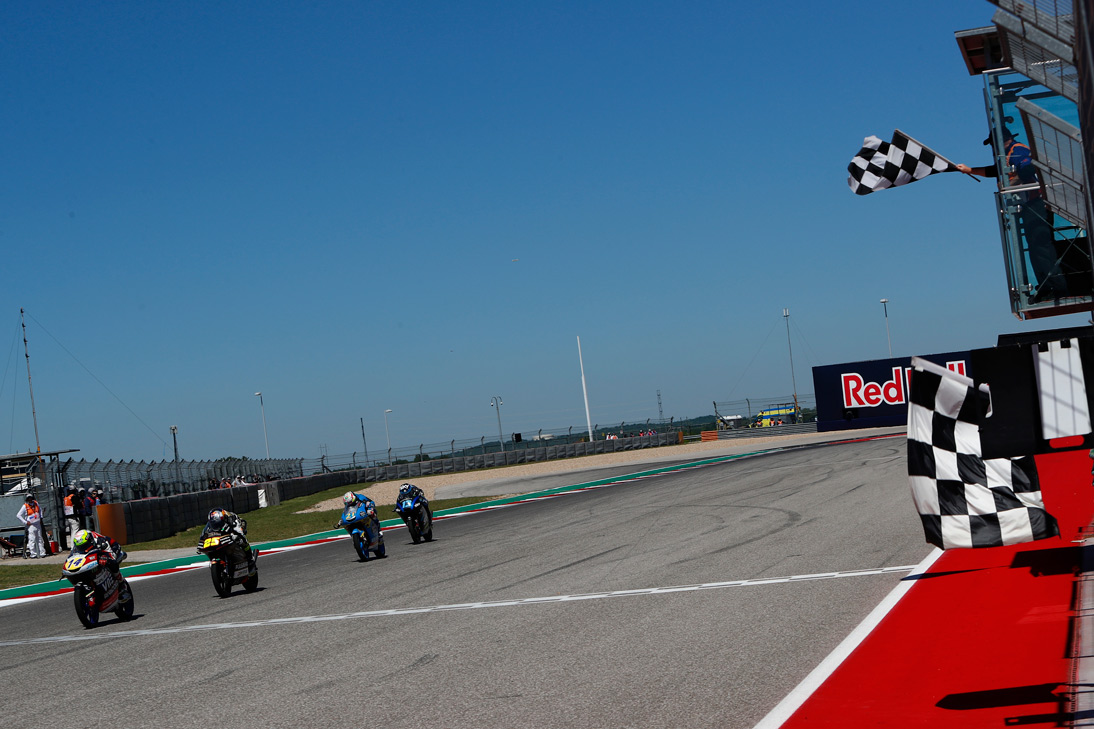ECU
The “Electronics Control Unit” or ECU is a key component in electronics. It is also known and the processing unit. This unit is responsible for controlling all electronic aspects of the machine. In MotoGP, all ECUs are manufactured by Magneti Marelli.
Endo
This is a riding manoeuvre in which the bike is stopped suddenly, causing the back wheel to rise. It is similar to a Stoppie but, in the latter, the bike doesn’t stop.


Engine block
This is another term used to refer to the cylinder block we already mentioned in the previous issue of our glossary.
Engine Braking
This is a braking effect that happens when you let off the throttle and the engine stops being fed. The propulsion mechanism continues to turn due to the drag effect of the transmission but, instead of generating power, it retains it all. The ECU has a map to regulate engine feeding and moderate this effect, this is called the engine braking map.
Fairing
A motorbike’s body is of great importance to aerodynamics, in addition to protecting the bike and the rider from the potential impact of dirt. This component is strictly regulated in terms of both size and the number of designs available to a rider during the season, as well as the number of changes that can be applied to these designs.


Foot (Ft)
In addition to the part of the rider on the footrests, feet are a length measure in the imperial system. It continues to be used in Anglo-Saxon countries today. It is equivalent to 12 inches or 30.48 cm.
Feet per minute (ft/min)
Speed measurement unit frequently used in aeronautics to specify a plane’s rate of ascent. Its equivalence in metres per minute is 0.304 m/min. Repsol pilot Juan Velarde’s plane, the Edge 540V2, can exceed 3,500 ft/min when ascending.
Fender
Even though the word fender may get many of us thinking about the legendary guitar manufacturer, it is also the name of the part of the bike covering the top of the tyre. As this is an external component, its design is crucial to aerodynamics and also serves to prevent water and dirt from being projected onto the bike or the rider. Like the fairing, its size and the number of modifications that can be applied are subject to regulations.
FIM
This is the acronym of the International Motorcycling Federation, the body governing this motorsport worldwide. The FIM has over 100 national federations spread over 6 continents.


Flags
Flags are used in MotoGP to tell riders about the different situations in the race or the conditions of the track. The work of waving them in places where they are visible to riders is the responsibility of flag marshals.
Flywheel
This is the part located at the output of the crankshaft and coupled to the clutch. It facilitates the operation of the engine, maintaining momentum as it turns.
Fork
In a motorcycle, the fork refers to the suspension of the front wheel. In this set, we can find the cartridges that also contain the shock absorbers and springs. We can also find additional components anchored here, such as brake callipers and a few sensors. There are different types of fork but those in MotoGP are called “upside-down forks”.
Formation lap
This is the lap riders take just before the race. It is used to warm up the tyres and brakes before starting and to ensure that everything is working properly. It’s also called a “warm-up lap”.


Four Stroke
This expression refers to the number of strokes in an engine. In a four-stroke engine, the phases are intake, compression, expansion, and exhaust. Engines of this type complete a full cycle with every two turns of the crankshaft. All current MotoGP engines are 4-stroke, compared to the 2-stroke ones they coexisted with in the past.
Frame
Acting as the spine of the vehicle, the frame is what provides structural rigidity and stability during moments when the machine is under great stress. The external components, such as the fairing or suspension, are placed on the chassis, while the more delicate parts, such as the tank or the engine, are placed inside.
Fuel filter
This filter eliminates the impurities that the fuel may contain. It is of great importance because, due to low manufacturing tolerances, every impurity could lead to the breakdown or premature wear of the engine.


Fuel pump
This electrical pump takes care of providing a constant flow and pressure to the engine’s fuel rail. More fuel than necessary is always supplied but the remainder is never wasted, it returns to the tank through a separate line.
Fuel tank
This is the tank that stores the fuel for the vehicle. In MotoGP, is it often located just below the rider’s seat. It must comply with strict regulations to prevent hazards in the event of a collision.
MotoGP Glossary: C and D
MotoGP Glossary: G to L
3 months ago


 Join Us
Join Us  Join Us
Join Us 

